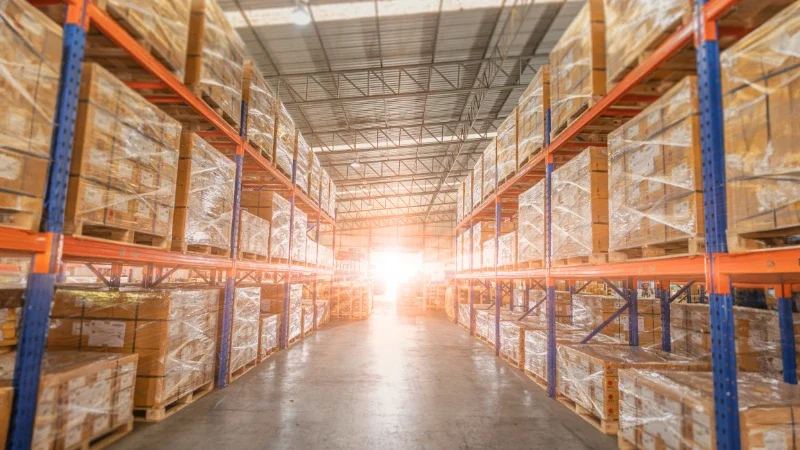What Makes a Good Warehouse?

A high performing warehouse is at the core of a successful supply chain. Serving as more than just a simple storage space, your warehousing is a dynamic operation that requires careful planning, efficient systems and a skilled workforce.
The logistics behind warehouse operations can be complex and often require expert warehouse management systems to ensure their ongoing success.
There are a number of key areas that come into play when deciding what makes a good warehouse – each area must run harmoniously alongside the other. A lapse in any area may result in the cycle of the business suffering. This can ultimately lead to delays in fulfilment and poor customer service.
If you want to optimise the performance of your warehouse, explore our list of essential components below that distinguish a good warehouse from a great one.
8 Things that make a good Warehouse:
1. Storage and design optimisation
Effective warehouse design is crucial for maximising space utilisation and operational efficiency.
By carefully considering product dimensions, weight and turnover rates and implementing strategies such as vertical storage, proper shelving and seamless aisle configuration, businesses can significantly reduce storage costs and improve order fulfilment times.
2. Fully trained staff
A skilled and motivated workforce is the heart of any successful warehouse.
Equip your team with the tools to succeed through comprehensive training programs, clear performance objectives and opportunities for development. Also, ensure that your team receives regular training refreshers when new machinery is used or new processes are implemented.
By investing in a high performing team, you can enhance the productivity and accuracy of your warehouse operations.
3. Up-to-date software
Efficient warehouses use the latest in software developments to help control operations. Up-to-date software programmes can be used to manage inventory, track warehouse maintenance, track shipping information and other logistic information, providing real time insights and allowing businesses to take proactive measures against potential supply chain interruptions.
There is a range of warehouse management software options available, and selecting the right WMS solution should be based on a thorough evaluation of business requirements and scalability needs
4. Health and Safety
Prioritising health and safety is essential for protecting employees, preventing accidents and maintaining operational continuity. Implementing ergonomic workstations, regular safety inspections and emergency preparedness plans are vital for creating a safe working environment.
Training is also paramount in ensuring the safety of your staff, both in the machinery they’ll be using, but also in areas such as handling heavy goods, properly processing waste etc.
5. Implementing robust security
Safeguarding your inventory and protecting your business reputation requires a comprehensive security strategy.
Losses and thefts can cost you and your clients – both in monetary losses and also a loss of trust and customer satisfaction.
Good warehouses should invest in high levels of security, including strict access control, 24/7 monitoring, CCTV and efficient alarm systems.
Additionally, implementing cybersecurity protocols to protect sensitive data is essential in today's digital business climate.
6. Picking and Packing processes
Efficient order fulfilment is a key performance indicator for warehouses.
Time spent picking and packing orders can have a significant impact on your warehouse operation speed and efficiency. A correctly developed pick list can help save time and resources. For small orders with large product quantities, arrange lists so pickers can work from one material location to the next to avoid any back and forth.
7. Protocols
Building a resilient supply chain requires careful planning and contingency measures.
While some emergency protocols may seem more pressing than others, it’s vital to have a range of thoroughly-planned protocols in place to cover a range of eventualities, including incidents such as fires, machinery breakages or accidents, or even the risk of flooding.
8. Strategic warehouse location
Choosing the right location for your warehouse is a strategic decision that impacts transportation costs, lead times, and customer satisfaction.
Factors such as labour availability, infrastructure and proximity to retailers and commerce centres should be carefully considered.
For businesses with multiple locations, optimising the warehouse network is essential for achieving economies of scale and improving overall supply chain performance.
At Optima Warehouse Solutions, we are fully equipped to help you discover the most efficient ways to run your warehouse.

